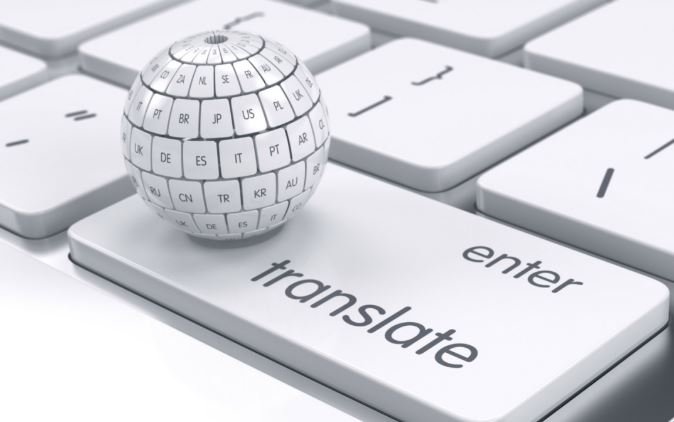What is website localization?
July 19 , 2021What is website localization?
by Target Language Translation Services
- July 19, 2021

Nowadays, competition is tough and most companies understand the significance of making their websites accessible to people within different countries and therefore add various language options to their sites, however, simple translation is just not enough. Website localization involves adapting it to local standards, while still keeping a unique global brand image. It involves complex processes and a qualified team to pull off with success.
Many companies make the mistake of gathering the text from their website and running it through a basic translation process. Although this will generally get the message across in simple terms, the language and sentence construction will often be unprofessional and irrelevant to the target market.
Why Do We Need Website Localization?
Website localization is a long term investment in your business, but it has a fairly fast ROI when done right.
However, when simply translating website text into another language without actually adapting it to that language, the message can be confusing and sometimes comical – something that never shows a company in its best light.
Some companies tend to cut corners by utilizing online translation services which inevitably leads in unprofessional and wrong website information. Rather than simply translating text, it’s vital that a company’s website is localized, which shows that each page is adapted to the local language and culture of the target market. The art of website localization is ensuring that each page makes sense in a linguistic and cultural context for each country. In some cases, a sentence which makes sense in one language can actually be offensive in another and so website localization can make the difference between gaining a new client or insulting them, which means website localization is a complex process involving a mixed team of programmers, translators, linguists and marketing specialists. You’ll also have to collaborate with local marketing experts to deal with cultural variations and legal issues successfully.
When approaching the international market, you need an experienced localization team that can come up with ingenious solutions for programming, design and marketing.
Software and automatic translation can’t replace human value, as machines don’t understand how website localization works. They can’t create customized marketing messages or an engaging user interface for your website. Not yet anyway!
You sell to real people, who just happen to speak a different language. Don’t expect computers to craft a message that makes real people choose you over local competitors; you’ll just waste precious resources.

How to Apply Website Localization
First of all, to localize your website, you need to cooperate with the right team who has the experience and resources to pull off a seamless website localization project for you.
But whether you go about website localization in-house, or you select an agency for the job, the same steps will apply. Let’s take a look at how website localization is typically achieved:
1. Internationalize Your Website
Internationalization means getting your website’s code ready for website localization.
This first step consists of a series of technical changes you must perform to make your website easy to translate into different languages. The good news is that you only have to apply internationalization once. All further changes to your website will be much easier once you have an internationalized page.
This is a job for programmers who know how website localization works and it mainly covers these major elements: Unicode, Hreflang Tags, Flexible design and Global-friendly colors.
2. Choose Your Target Markets
Once your website is ready for localization, you need to decide which languages and countries you’re going to localize for.
Analyze potential markets and pick those where you have higher chances to sell. Your current audience can give you valuable clues about where to start your website localization from.
Conduct specific research in the target market – define your buyer persona, evaluate competitors, consider cultural issues, taxes, local laws and financial predictions.
Make a realistic plan and start with a limited number of countries first. Your goal is to reach as many customers as possible, but without spending all your cash!
3. Translate Your Content
Translation is the act of transcribing the text into the new language. Website localization goes way beyond word-for-word translation. You need to adapt your content, to make it easy to read by locals. They need to feel as if they’re reading a message specifically designed for them – not some weak copy of the original version.
Understand the local culture and try to fit in the best way possible. People like brands they can identify with. So, if you talk about American football in Brazil, for example, you’ll soon find yourself without an audience.
You should work with human translators and local linguists where possible, to come up with the best version of your website for each language.
4. Optimize Website Localization for Search Engines
The next step is the ‘localization’ which is the process of adapting all of the text, graphics, images and headings to make sure that they are linguistically and culturally appropriate for the target locale or market segment. Localize your SEO strategy to rank higher in search engine results. Find the relevant local keywords and key phrases in your niche and utilize them to optimize your local web content. The success of your website localization campaign depends upon your selection of the right keywords in each market.
Cultural gaps are quickly reflected in the way people use search engines. Don’t assume that translating your English keywords will do the job. Seek the advice of local natives on the ground to ensure you’re using the right vocabulary.
You also need to translate and optimize all meta descriptions, alt tags and anchor texts. And, last but not least, you’ll have to build back links from local websites in the language in question, as part of localizing SEO.
This article is reprinted from CLEAR WOR TRANSLATION, Future Trans and MotionPoint.
If there is a copyright, please inform us in time, we will delete it right the first time.